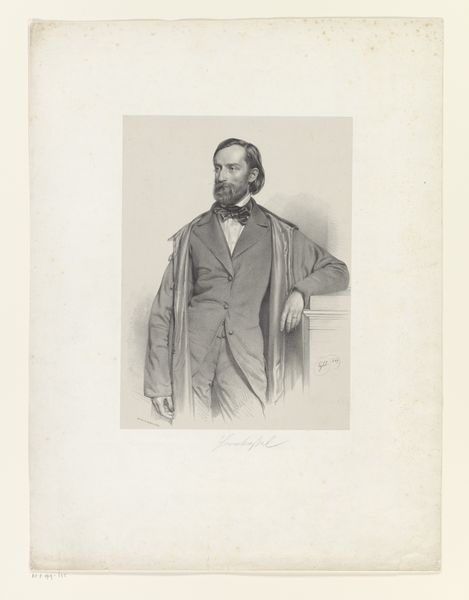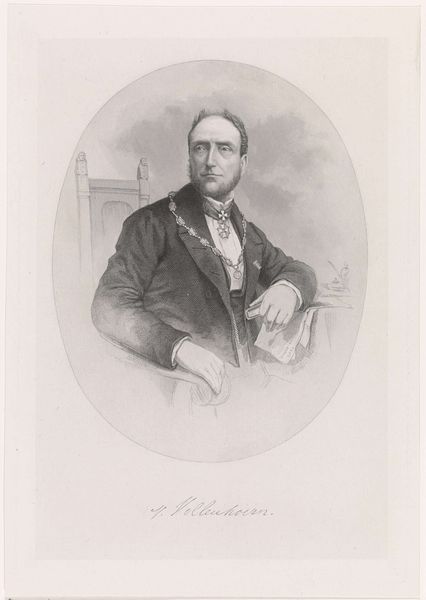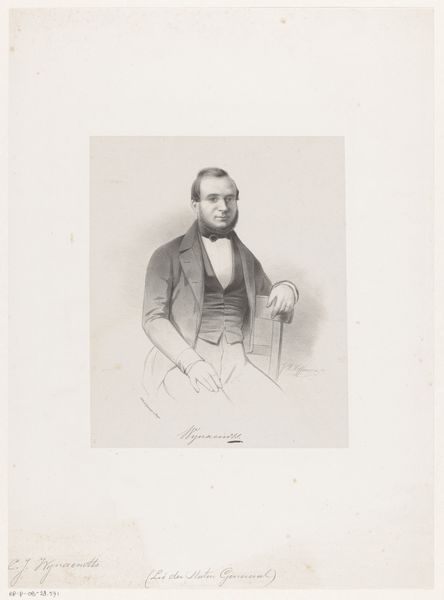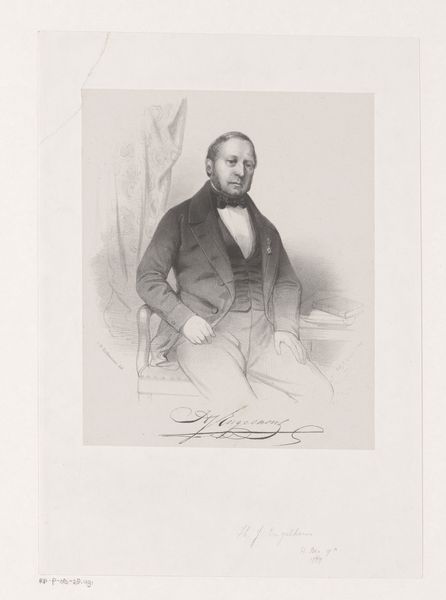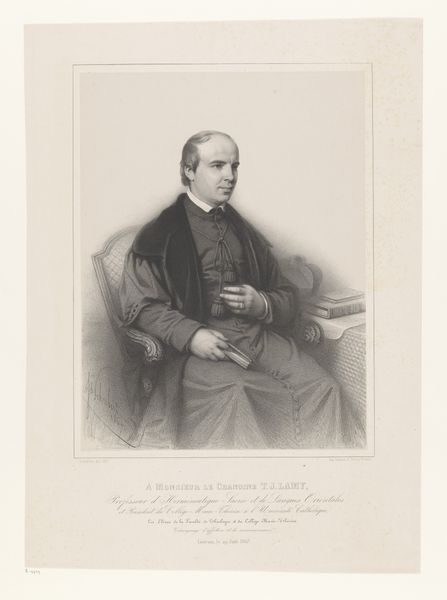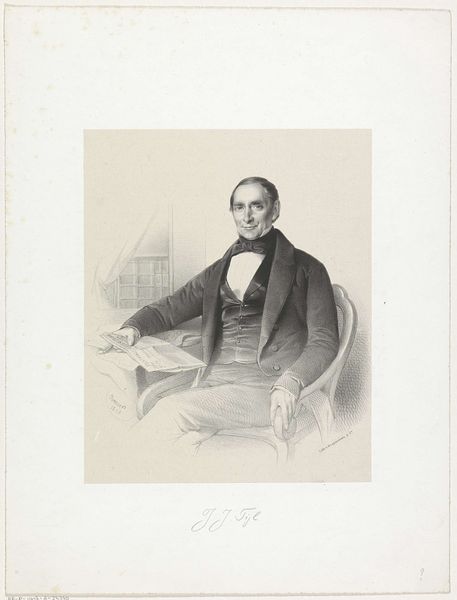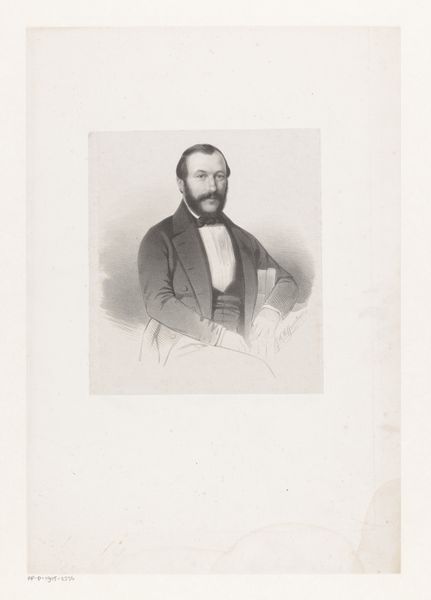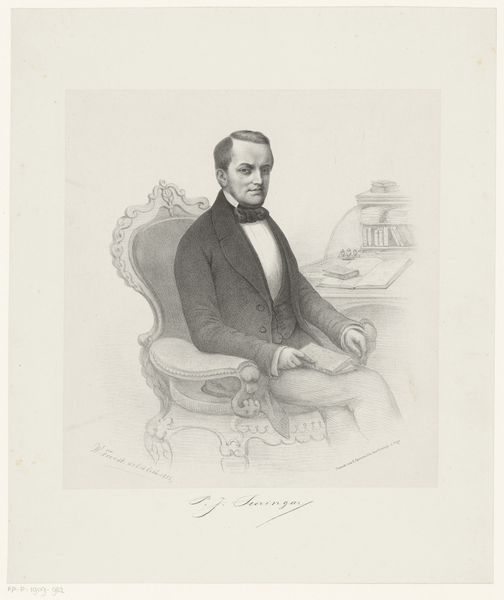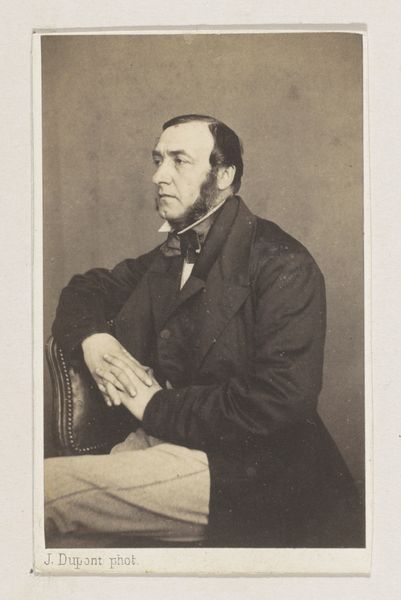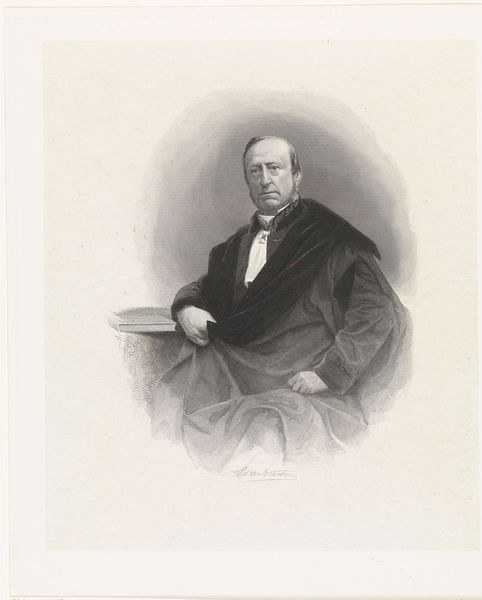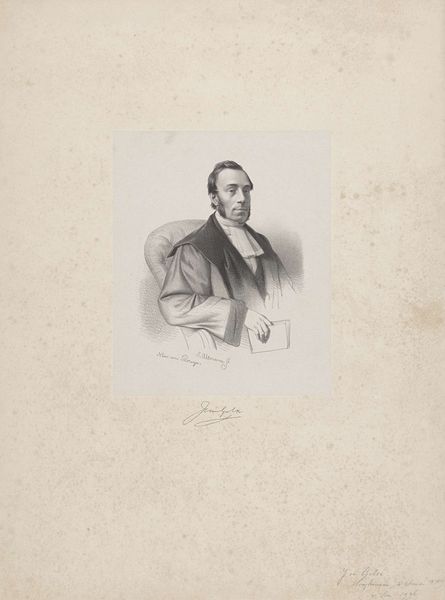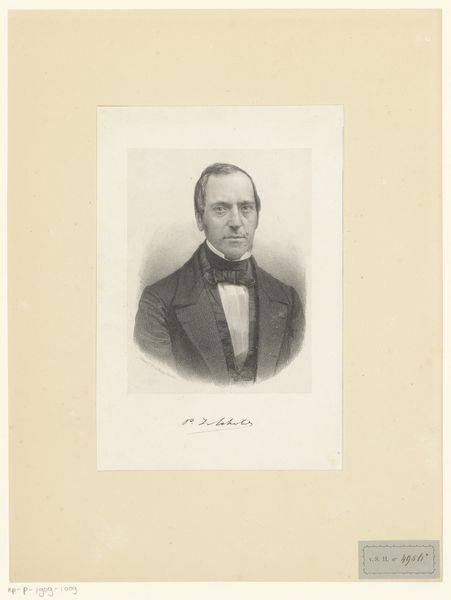
drawing, print, graphite
#
portrait
#
drawing
#
16_19th-century
# print
#
graphite
#
realism
Dimensions: height 550 mm, width 421 mm
Copyright: Rijks Museum: Open Domain
Curator: This is a drawing entitled “Portret van Gerhard Heinrich van Senden,” attributed to Wilhelmus Cornelis Chimaer van Oudendorp, and created sometime between 1832 and 1873. The medium appears to be primarily graphite on what could be a type of print. Editor: There's a quiet formality to this work. The sitter, elegantly dressed, is framed by soft light, giving him a somewhat approachable yet reserved aura. The detailing is quite striking in its execution. Curator: Yes, the work showcases a mastery of realism, doesn't it? Looking at it within the context of 19th-century portraiture, one could analyze this drawing in relation to emerging bourgeois values. The sitter's posture, attire, even the faint suggestion of interior decor all speak to his social standing and aspirations. It represents not just a person, but a certain level of respectability and power in that time. Editor: Absolutely, but let’s zoom into the graphic structure itself. Note the density of line work used to suggest form and shadow versus the minimal treatment of negative space. The textures throughout feel subdued. This contrast allows certain areas, like the sitter’s face, the medal on his jacket and hands to appear brighter, to demand attention, while his surroundings almost fall into secondary view. It’s incredibly considered. Curator: I find that your reading certainly strengthens a narrative interpretation, doesn’t it? Focusing our view on what you call key structural points is to highlight his social prominence— the reward for civil servitude. It prompts us to question whether this artistic focus was part of a larger political agenda for that century, reinforcing prevailing status structures. Editor: Indeed! To further unpack the interplay between semiotics and materials, consider the impact of rendering the portrait in graphite, then the subtle duplication using printed edition copies, which perhaps reduces individual grandeur for broader viewership— a deliberate act that echoes the evolving nature of power and representation itself. Curator: It is a great observation of how artistic mediums and representational choices reflected evolving power dynamics, prompting a very worthwhile questioning of art’s function during social transition. Editor: In essence, it reveals not just who the subject was but the social lens through which they, and their era, wanted to be perceived.
Comments
No comments
Be the first to comment and join the conversation on the ultimate creative platform.
